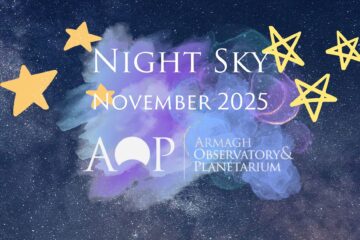Welcome to summer stargazing 2025. We are going to have a look at the night sky and some of the things we can see through June. Hopefully, these nights are warm enough to feel comfortable stargazing. We will have to wait a bit to see the stars as the sun sets later in this month than others. To help make the most of staying up later it is usually very helpful to keep phones away, so that our eyes can adapt to the dark, and head out of the towns and cities to reduce the impact of light pollution. It does take a while for our eyes to adapt in the first place so the less we use our phones the better in this case.
Constellations
Libra doesn’t represent an animal, mythical creature or hero. It is an everyday object (from back in the day), it is a set of scales. It is the only one of the zodiac constellations that is an object and not a creature or person. Its brightest star is called β Libra, or Zubeneschamali (I spellchecked it twice), a name that comes from Arabic. Many of our current constellations have a mix of influences that are Greek, Roman and Middle Eastern.
Scorpius represents a scorpion in the night sky, with the shape vaguely resembling the tail and pincer of the arachnid. This is an old constellation and may have survived from ancient Sumeria and Babylon, modern day Iraq and Iran. The brightest star in this constellation is Antares, which the rival of Ares, or rival to Ares, who was the Greek equivalent to Mars (like the planet). The constellation is quite low in the Southern sky as we view it from Armagh, and more visible from the southern hemisphere. The moon will also pass through this constellation on the 10th – 11th of June.
Both of these constellations are zodiac constellations. Which means that the sun will pass in front of them during the year, so these constellations would be a background to the sun during the day, if we didn’t have a blue sky. These constellations are also quite low in the sky from the perspective from Armagh; to see them more clearly it is best to place yourself to the south of any city, so the light pollution doesn’t mar your view.
The Moon
The Full moon will occur on Wednesday the 11th of June, below the constellation of Ophiuchus, but the constellation will likely not be visible since the sun will have risen by then. It will happen at around 08:43 a.m., so hopefully we can see it in a clear blue sky. Like the other months, this full moon has a few nicknames fitting the timing of it around the world. In North America, it coincides with strawberries becoming ripe enough to harvest, so it is the Strawberry Moon. Parts of Europe refer to it as the Rose moon and other parts of the world call it the Hot Moon, since the heat can really pick up around this time of year.
No matter what name we call it, the key feature is that it appears as a fully lit disc in the sky, lit up by the suns light and reflected down to Earth.
Deep Sky Objects
The Horsehead Nebula about 520 lightyears away from us is a beautiful example of a nebula, and is visible at this time of the year. This one reflects the light of nearby stars towards us, but a telescope would be helpful to be able to see it in the sky.
The lagoon nebula is much further away, at more than 4,000 lightyears away. This one is much redder in colour than the previous nebula, with plenty of bright stars in the same region of the sky.
Telescopes help us see these much more clearly and if you can connect a camera, you can get some long exposure to bring out more light from the darker regions.
Summer Solstice
This month also sees the summer solstice on the 21st of June. This is the “longest day” in the Northern Hemisphere, but only in the hours of sunlight that we get. Mind you Armagh isn’t known as a sunshine destination, so we usually expect some cloud coverage. Simply put, this is the day this year that the sun will rise the earliest and set the latest. So that means we have limited time for any stargazing on the nights around this day.
Happy Stargazing 😊






0 Comments